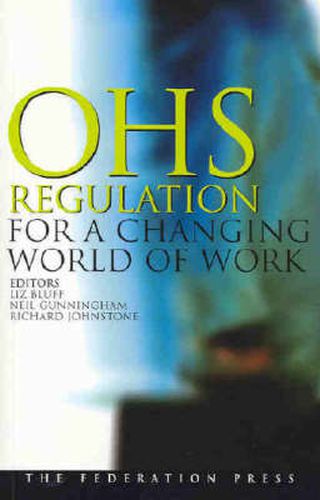Readings Newsletter
Become a Readings Member to make your shopping experience even easier.
Sign in or sign up for free!
You’re not far away from qualifying for FREE standard shipping within Australia
You’ve qualified for FREE standard shipping within Australia
The cart is loading…






This volume assesses the legacy of the Robens Report, the intellectual foundation of modern OHS law and practice in Australia and many other countries, following the Report’s 30th anniversary.
The authors confront the challenges facing OHS regulators and stakeholders in a new and different world dominated by service industries and globalisation rather than manufacturing industries and protection. They explore new models of OHS regulation that take account of gaps and deficiencies in the current arrangements.
The authors bring international expertise from the United Kingdom, New Zealand and Scandinavia as well as Australia. They focus on the kinds of regulatory strategies, including both OHS law and enforcement policy, that are most likely to produce good OHS outcomes in this changing world of work.
Particular topics examined are:
the type, mix, content and coverage of OHS standards,
systematic OHS management and the development of organisational capability,
strategies for effective worker participation and representation,
models for achieving small business compliance,
regulatory responses to changes in work organisation, responsive enforcement and adapted inspection, and
restorative justice.
$9.00 standard shipping within Australia
FREE standard shipping within Australia for orders over $100.00
Express & International shipping calculated at checkout
This volume assesses the legacy of the Robens Report, the intellectual foundation of modern OHS law and practice in Australia and many other countries, following the Report’s 30th anniversary.
The authors confront the challenges facing OHS regulators and stakeholders in a new and different world dominated by service industries and globalisation rather than manufacturing industries and protection. They explore new models of OHS regulation that take account of gaps and deficiencies in the current arrangements.
The authors bring international expertise from the United Kingdom, New Zealand and Scandinavia as well as Australia. They focus on the kinds of regulatory strategies, including both OHS law and enforcement policy, that are most likely to produce good OHS outcomes in this changing world of work.
Particular topics examined are:
the type, mix, content and coverage of OHS standards,
systematic OHS management and the development of organisational capability,
strategies for effective worker participation and representation,
models for achieving small business compliance,
regulatory responses to changes in work organisation, responsive enforcement and adapted inspection, and
restorative justice.